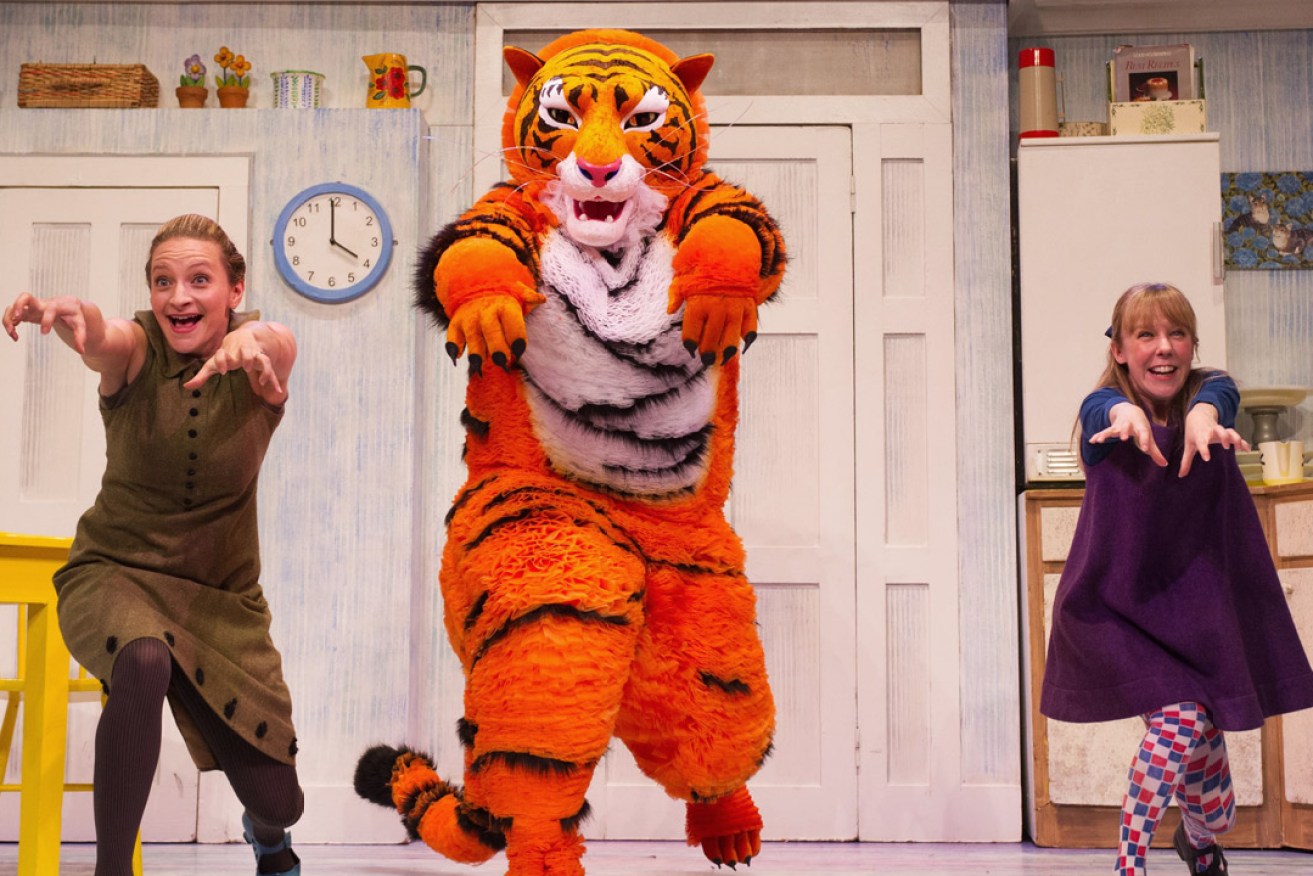Hungry tiger a bit tired for modern kids
The Tiger Who Came to Tea is a children’s book written and illustrated by Judith Kerr in 1968 about a mum and daughter who discover a tiger at their front door.

The mother invites him in to join them for lunch and the tiger proceeds to eat all their food. The family then goes to a cafe for sausages and chips. It is a very basic story and the musical theatre adaptation presented at Her Majesty’s Theatre on the weekend was a faithful reproduction.
Directed by seasoned children’s theatre director David Wood, The Tiger Who Came to Tea is performed in typical children’s theatre style, which draws on the English love of traditional pantomime. Susie Calcutt has designed an attractive home interior with functional appliances providing occasional visual gags.
The show began with the three actors putting on smiley faces and singing a “Hello” song, with the audience expected to participate by singing some words when given an obvious cue. There was some comic business when Ben Wells, as dad, was in a muddle as he rushed for work, had trouble putting his arms in sleeves, mistook a tea cosy for a hat and forgot his shoes. All good fun.
Mum (Jenanne Redman) and daughter (Abbey Norman) did very little other than to sit down to eat. They acknowledged the clock on the wall and proceeded to regularly enact a dance ritual which required the children to count the time of day. Mimed cereal, toast and sandwiches didn’t cut the mustard, and the play’s ritualised urbanity failed to stimulate the imagination of audience members.
Wells whet the appetite of the children when he appeared as a postman and a milkman; the characterisations were differentiated in stereotypical ways and the scenes provided some mild amusement.
The children were keenly awaiting the tiger’s appearance and were delighted at his arrival.
The tiger’s costume was bright and colourful and he was quite entertaining, but the act of devouring all the food in the house was a one-trick wonder and even the children began to tire of the repetition.
There were more songs (with notes almost reached) and simple dance routines, perhaps designed for the very young to try in their seats. Much was made of a silly song about the delight of eating sausages, chips and ice-cream and the children eventually gave up singing along.
The Tiger Who Came to Tea is an adaptation of a book from the late ’60s and is performed in a style that has been employed in children’s theatre for centuries. It all felt a bit tired, old-fashioned and unimaginative.
At the end of the 45 minutes the actors must have been worn out from their fixed smiles and big eye expressions, and parents and children left the theatre having seen something that was “just like the book” except that the tiger is silent. There is some marvelously inventive and imaginative staging of children’s theatre, and South Australian companies – Windmill, Slingsby, Patch, plus newcomers such as the McNirt Collective – adopt more modern and adventurous approaches than this visiting company.
The Tiger Who Came to Tea was presented at Her Majesty’s Theatre from January 22-24.




